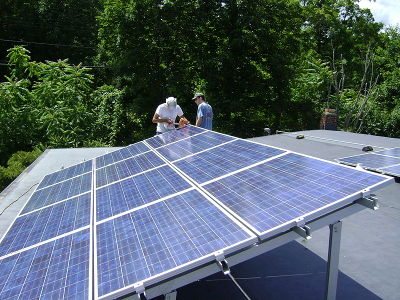Tax credit

A tax credit is a certain amount that a tax payer is able to subtract from their annual taxes they owe to the government, the size of the credit and the restrictions are determined beforehand.[2] A tax credit is issued as a dollar amount rather than a percentage of taxable income. For example if a tax payer gets a tax exemption or deduction the amount of income that can be taxed is reduced whereas with a tax credit, the credit is applied against the final amount that is to be paid to the government.[3][4]
The under the "Residential Toilet Replacement Program" the Government of Alberta offers the residents of the City of Calgary a tax credit if they replace older, inefficient toilets with toilets that are certified to use less water per flush.[5] This is an example of the government creating a fiscal incentive for homeowners to reduce their water consumption thus with the goal of reducing the overall usage of water in the municipality.
Refundable Tax Credit
A refundable tax credit is one that can be applied past the point of a $0 tax bill and become a refund. If a person’s tax bill is $300 and they receive a $400 tax credit then their tax liability after the credit is applied will be -$100 meaning that the government owes that tax payer money.[6]
Non-Refundable Tax Credit
A non-refundable tax credit is a credit that can only be applied until the tax liability of a person reaches $0. Using the example above, Even though the tax liability is less than the credit the liability would just be reduced to 0 and the tax payer would not receive the full amount of the credit in the form of a refund.[3]
Energy Tax Credit
In Canada, provinces have various tax credits that they offer for homeowners who invest in their homes to make them more energy efficient. There is a wide range of credits available to Canadians:[7]
- A tax credit for the replacement of less efficient appliances with more energy efficient "Energy Star" appliances.
- The upgrading to new, more efficient HVAC systems.
- The installation of ground source heat pumps to increase the efficiency of home heating an reduce reliance on fossil fuels or good electricity for home heating.
- A tax credit offered for the use of CFL and LED light fixtures.
These credits range from a few dollars to $20,000.
Investment Tax Credit
Tax credits can be offered to firms to encourage the initiation of new projects or to speed up the start date of new projects. Because the firm will have a smaller amount of taxes to pay, they don't have to raise as much capital as they would otherwise.[8]
See Also
References
- ↑ Wikimedia Commons.By Lucas Braun - Own work, CC BY-SA 3.0, https://commons.wikimedia.org/w/index.php?curid=12261041 [Online], Available: https://commons.wikimedia.org/wiki/File:Rooftop_Photovoltaic_Array.jpg#/media/File:Rooftop_Photovoltaic_Array.jpg [Aug 17, 2017]
- ↑ J.Black, N. Hashimzade, and G. Myles. (2009) "Tax Credit." [Online], Available: http://www.oxfordreference.com/view/10.1093/acref/9780199237043.001.0001/acref-9780199237043-e-3079?rskey=o5BYmR&result=1, 2009 [Aug 22, 2016]
- ↑ 3.0 3.1 Investopedia. "Tax Credit." [Online], Available: http://www.investopedia.com/terms/t/taxcredit.asp?ad=dirN&qo=investopediaSiteSearch&qsrc=0&o=40186 [Aug 22, 2016].
- ↑ H. Kerr, K. McKenzie and J. Mintz. Tax Policy in Canada. Toronto: Canadian Tax Foundation, 2012, pp.7:20.
- ↑ Natural Resources Canada. "Program Details." [Online], Available: http://oee.nrcan.gc.ca/corporate/statistics/neud/dpa/policy_e/details.cfm?searchType=default§oranditems=all%7C0&max=10&pageId=1&categoryID=all®ionalDeliveryId=10&programTypes=4&keywords=&ID=4567&attr=0, Jun 30,2016 [Aug 22, 2016].
- ↑ Investopedia. "Refundable Credit." [Online], Available: http://www.investopedia.com/terms/r/refundablecredit.asp [Aug 21, 2016].
- ↑ Natural Resources Canada. "Rebates and incentives." ]Online], Available: http://www.nrcan.gc.ca/energy/products/energystar/why-buy/14136, Aug 17, 2016 [Aug 22, 2016]
- ↑ R.W. Kopcke, G.B. Tootell and R.L. Triest. The Macroeconomics of Fiscal Policy. Cambridge: Massachusetts Institute of Technology, 2006, pp. 9.

